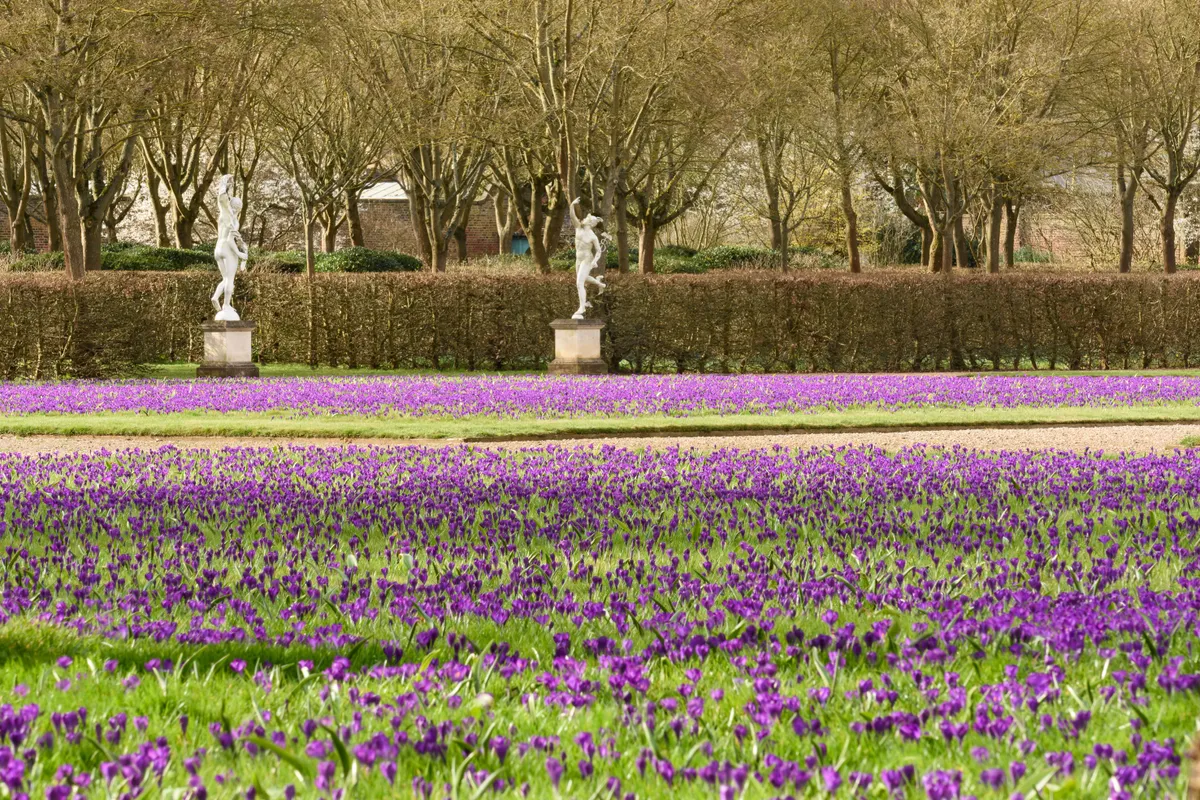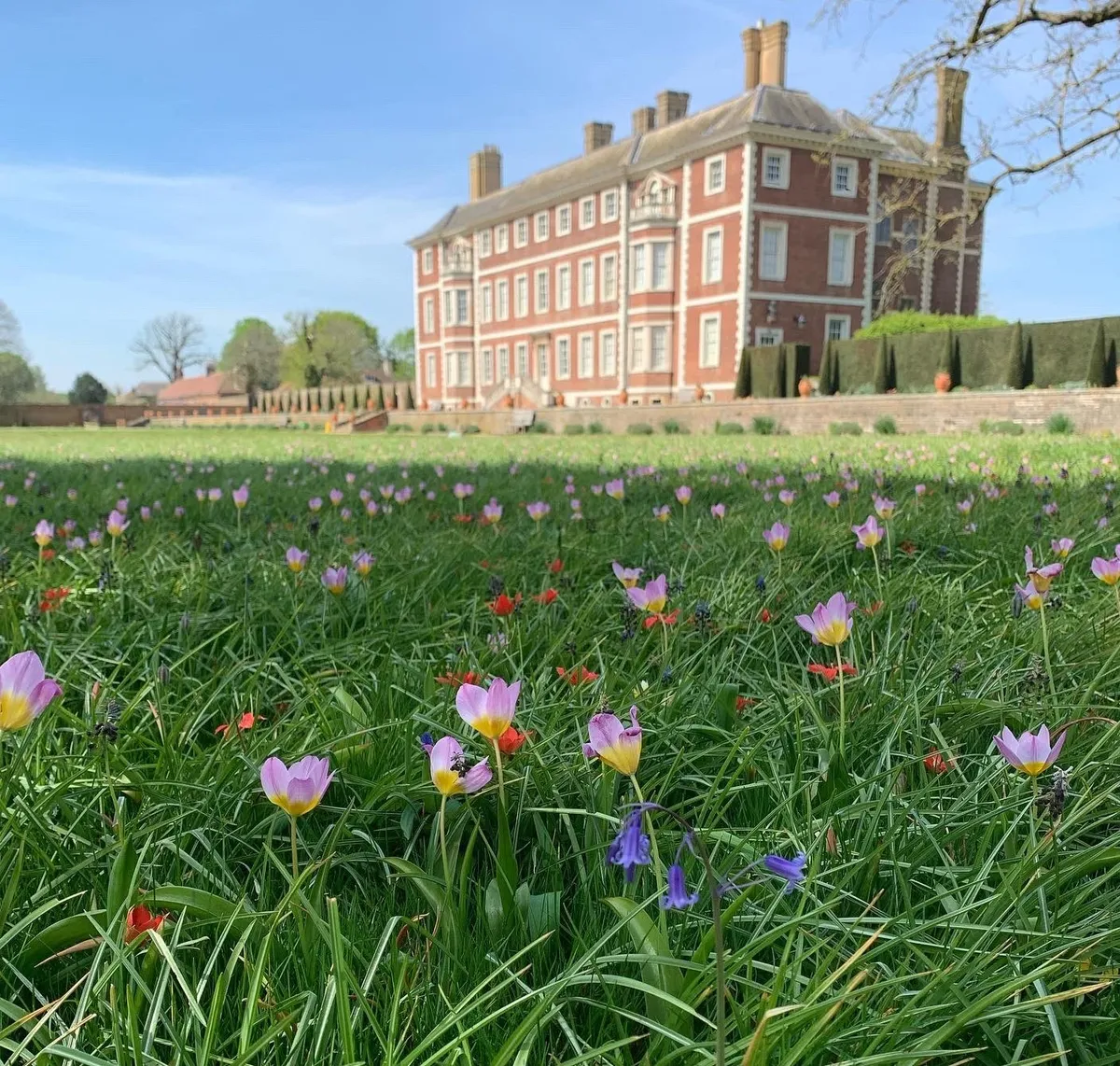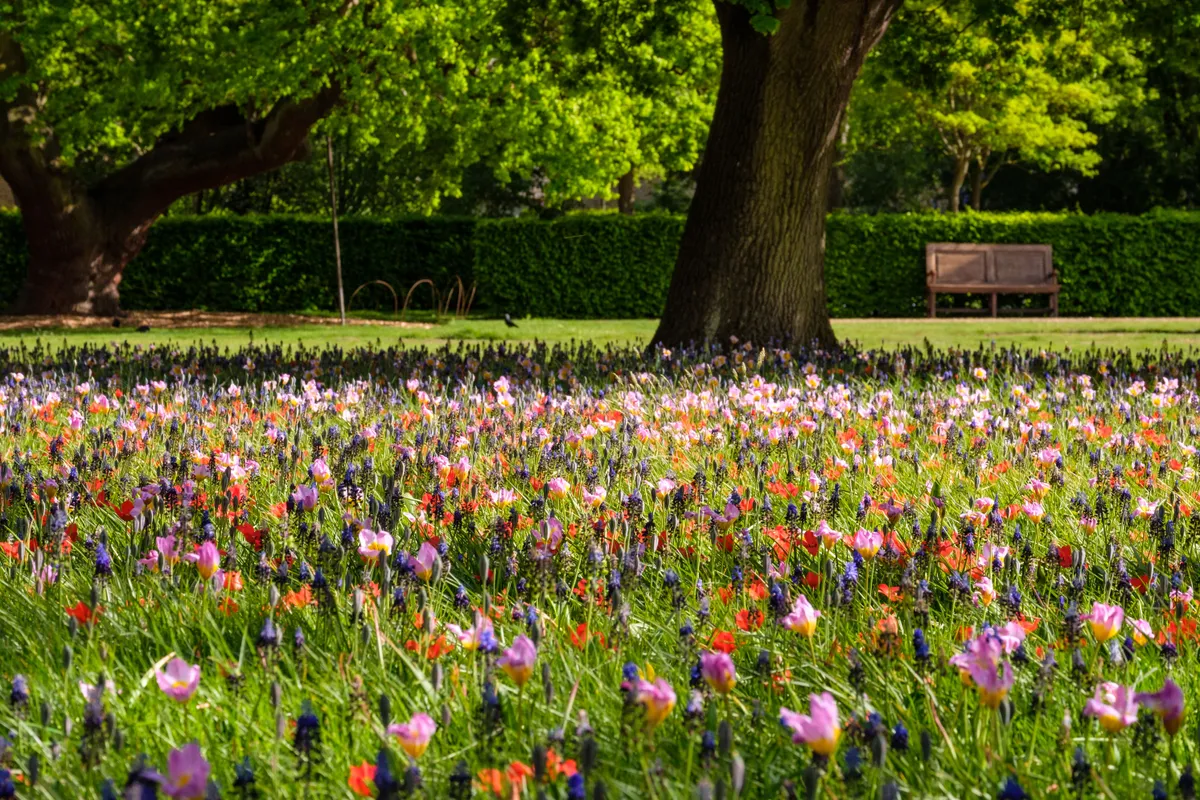A few years ago, I planned a mass planting of four large formal lawns at Ham House, known as ‘plats’. I chose 500,000 bulbs that were wildlife-friendly, each one a useful food source for pollinators.
Their flowering meant massive additional pleasure for me (and our garden visitors) and significant improvement in the biodiversity of our formal garden.
The joy was twofold. The ‘wow’ factor of seeing half a million bulbs in full colour, creating a sea of sequential, orchestrated flowering, was one thing. Watching a solitary bee feeding on a single, unique bloom was another, helping me appreciate the micro detail of the blooms, too.
Considering wildlife gives you an extra factor to build into your bulb choices. Most bulb suppliers list bulbs that have ‘nature value’. If like me, the bulb catalogues provide you with that holiday feeling from your armchair, thinking through your preferences with ‘wildlife food source’ as a requirement will add something to your satisfaction straight away. You’re planning a menu.
- Read our guide on when to plant bulbs
How to plant spring bulbs for pollinators
Broadly speaking, there are two things to think about if you don’t just want to be guided by commercial information. First, access to pollen: does the flower shape allow the pollinators in your garden to enter, dine and leave freely? Second, have you ensured the longest flowering period in your choices? Doing so will not only give you pleasure, it will also feed hungry foraging insects, too.
Consider location differently
Could you plant bulbs in an area of turf this year? If you can wait to use this turf as lawn for six weeks after your bulbs have finished flowering, or when the bulb foliage has died down, why not? Planting in turf need not be onerous. You can use a half-moon cutter or a sharp knife to slit the turf and place your bulbs in. When the bulbs start to grow, you’ll know where not to walk on your lawn for 2 to 3 months.
Think sequentially
It’s not just pots that benefit from a bulb lasagne! Any space you are using for spring bulbs can be used to grow a mix of sequentially flowering bulbs of different species and bulb sizes. You can choose bulbs to start flowering in February and if you want to, continue right through May.
Don’t be too worried about different planting depths either – a middle ground, a bulb depth that accommodates 3 to 4 species – is likely to be just as successful. Do just check how much foliage each might produce as you don’t want failing foliage crowding out new flowers. This might mean you leave a bit more space between bulbs.
Try repeat performers
You don’t necessarily need to plant fresh bulbs every year. There are wonderful, reliable perennial and naturalising choices available and you don’t have to skip the tulips: we have used species tulips to great effect. They might not have the modern height and shapes of bred tulips but en-masse they do have a naturalistic quality that is breath taking.
Search online for ‘tulips in the wild’ and use these images as inspiration. The places you find will indicate the growing conditions these tulips can thrive in. As a rule of thumb, if you’re considering a species plant (one that originated in the wild, rather than bred) it will be a food source for wildlife.
The best spring bulbs for pollinators
Crocus ‘Ruby Giant’

Vibrant purple, flowers early Feb/March, great for the first pollinators, works very well in grass, naturalises easily. Read more about the best crocus to grow.
Muscari latifolium
With two-tone dark and vibrant blue flowers in March/April, this grape hyacinth is great for naturalising.
Tulipa ‘Lilac Wonder’

Bowl-shape pink-mauve open flower, flowers in April/May.
Tulipa turkestanica

Elegant white with open egg-yolk yellow centre, flowers March/April, naturalises over a number of years.
Tulipa tarda
White flushed yellow, flowers March/April, naturalising.
Tulipa linifolia
Scarlet reminiscent of poppies, flowers April/May, naturalising.

